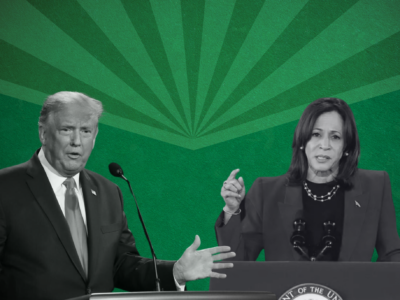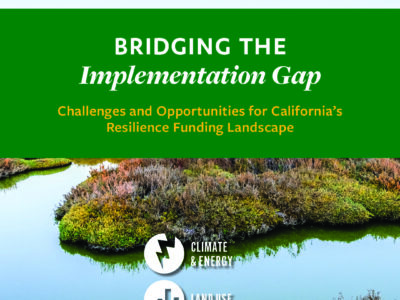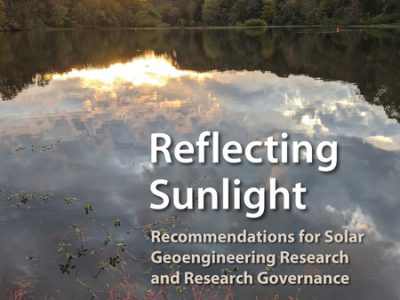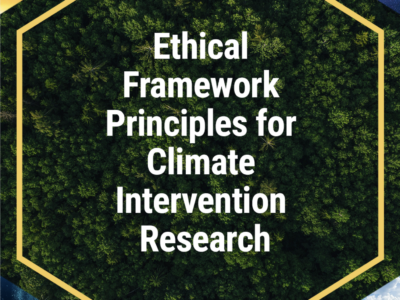Trump Can’t Stop the Clean Energy Transformation
The global transformation to an economy fueled by clean energy can't be stopped. Trump could slow down U.S. progress though.
Here’s an uncontroversial proposition: if Donald Trump wins the election (a horrific thought), we will make less progress in attacking climate change than if Kamala Harris wins. His most recent remarks on climate were appalling: “They say global warming, they used to call it global warming but now they call it climate change. You know why? Because climate change covers it if it's too cold. We are suffering from climate change. If it's cold, it's good. If it's h...
CONTINUE READINGIs California’s Climate Resilience Funding Ready for the Future?
New CLEE Report Identifies Key Challenges and Opportunities in the State’s Adaptation Funding Landscape
As climate change accelerates, California faces increasingly severe threats to its communities, economy, and environment. Rising temperatures, prolonged droughts, sea-level rise, and worsening wildfires are among the risks stretching State and local resources and driving demand for adaptation funding. California has utilized its longstanding leadership in climate policy to confront these challenges, including developing the State Climate Adaptation Strategy, establishi...
CONTINUE READINGCarrots Are More Durable Than Sticks
Laws like the Inflation Reduction Act may have more sticking power than regulations.
The Big Bad Wolf came to the house of sticks that EPA had built. “I’ll huff and I’ll puff and I’ll blow this house down.” And so, he did. Then he came to the house of carrots built by Congress. He huffed, and he puffed, and then he huffed some more, but he couldn’t blow that house down. This little fairytale illustrates an important point: a major advantage of spending-based programs (“carrots”) such as the Inflation Reduction Act is that they may be...
CONTINUE READINGReducing Financing Costs for New Transmission in California
New CLEE Report Release & Webinar on Wednesday, November 13th at noon PT
California will need a significant build-out of new high-voltage transmission lines to meet state goals for renewable energy deployment and a decarbonized grid by 2045, which requires quadrupling its current in-state solar and wind capacity. But if this new infrastructure is paid for solely through electricity rates, it could increase them significantly, when they have already increased roughly 50% over the past three years for investor-owned utility customers. In res...
CONTINUE READINGNo More ‘House of Horrors’ Thanks to These New Laws
Several California laws prohibiting dangerous chemicals from household products go into effect on or after January 1, 2025.
Halloween is the one time when we welcome ghouls, ghosts, and goblins coming to our homes (and, if your neighborhood is anything like mine, a variety of tiny superheroes). This season, however, the Legislature is dealing with a different kind of house of horrors: dangerous chemicals in everyday products that affect millions of Californians’ health. From cancer-causing food dyes to lung-damaging fiberglass in our furniture, California’s State Legislature and the G...
CONTINUE READINGA Framework for Equitable Climate Infrastructure Investments
Reframing Infrastructure Investments to Realize an Equitable Transition
Achieving climate goals requires significant investments in clean energy, transportation, and other climate technologies to reduce greenhouse gas emissions and remove carbon from the atmosphere. The Bipartisan Infrastructure Law and Inflation Reduction Act have resulted in historic levels of public investment to transform existing energy and transportation systems and lay the foundation for emerging climate technologies. Accompanied by federal and state commitments to pr...
CONTINUE READINGWith a Week to Go, Where Do the Elections Stand?
The Presidential, Senate & House elections will have immense repercussions in terms of energy and environment.
This elections seemunusually weighty in its policy implications. In terms of energy and climate policy, the two parties parties are far apart -- Republicans favor energy dominance through massive fossil fuel production, Demorats favor clean energy. To the immense frustration of people on both sides, things haven't moved much since September, when I last wrote about the state of the race. As usual, I’m basing my assessment on two experienced prognosticators, Sabato...
CONTINUE READINGThe 2024 Election Outcome Could Boost the Case for Geoengineering
A Trump victory would increase the odds that we will ultimately need to start blocking solar radiation as a last resort to limit climate change.
The U.S. and other countries are currently stumbling their way to a sharp reduction in carbon emissions. At this point, the effort has been a mixed success. We definitely seem to be on the path to reducing emissions but having trouble doing so quickly enough. A Trump victory would set back this effort and increase the odds of very destructive impacts from global warming. We could end up with little choice but to pursue some high-risk efforts to reduce warming. Propo...
CONTINUE READINGThe Yankees Already Beat the Dodgers at One Thing
The Yankees recently dropped Hess Oil from their outfield scoreboard. But in LA, the Dodgers’ Big Oil sponsorship with 76 gas is on full display in the 2024 World Series.
The Dodgers and the Yankees in the World Series. That’s the zenith of baseball rivalries and I’m rooting for the home team. Which is why I hate to say it, but the Yankees have already beaten the boys in blue at one thing: their climate commitment. As of this season, the Yankees dropped their most visible Big Oil sponsor from the stadium scoreboard—a billboard for Hess Oil. Meanwhile, the Dodgers keep on shilling for 76 gas by putting that big orange ball l...
CONTINUE READINGAn Ethical Framework for Climate Intervention Research
Can the AGU's new principles defuse controversy and enable responsible research?
Research into climate intervention techniques, especially solar geoengineering, has long been controversial. Scientists as well as publics and policy makers have been divided on its risks and merits. In recent years, experiments proposed or undertaken in the USA, Sweden and Mexico have triggered vociferous opposition. Growing and unregulated commercial interest in the technologies seems likely to further polarize debate. In this context a new initiative by the AGU to ...
CONTINUE READING












